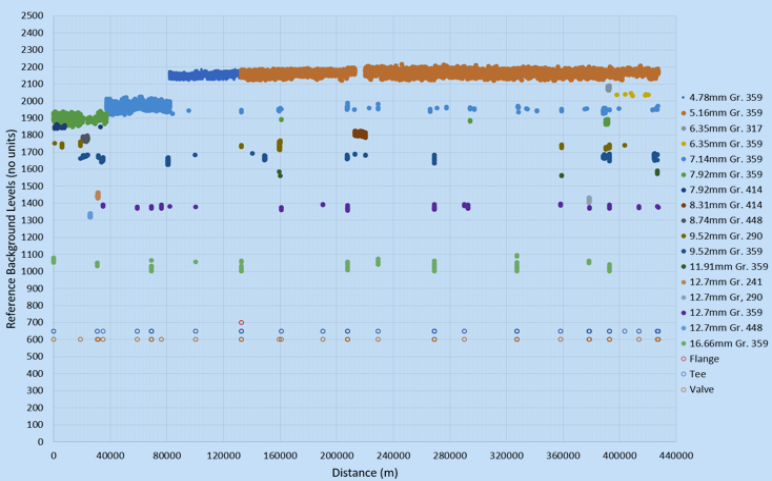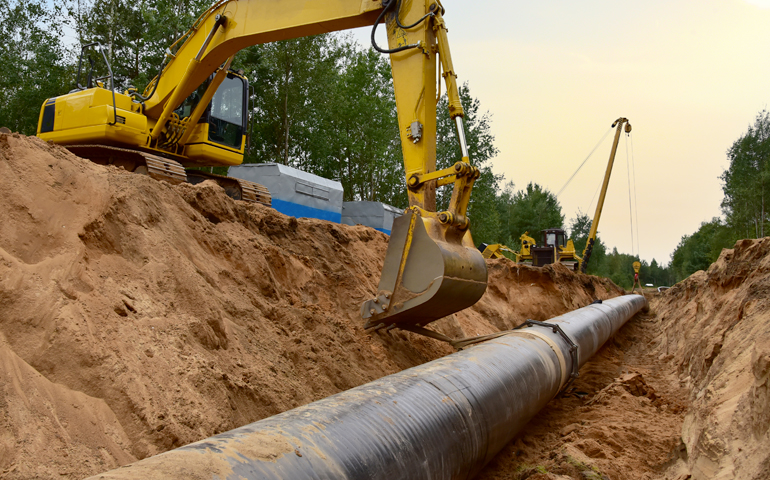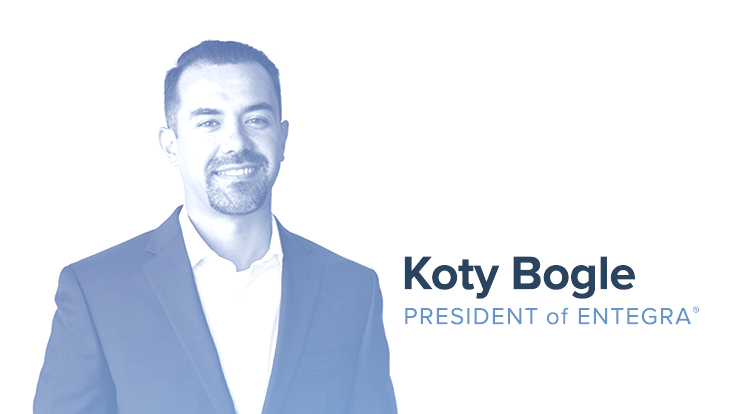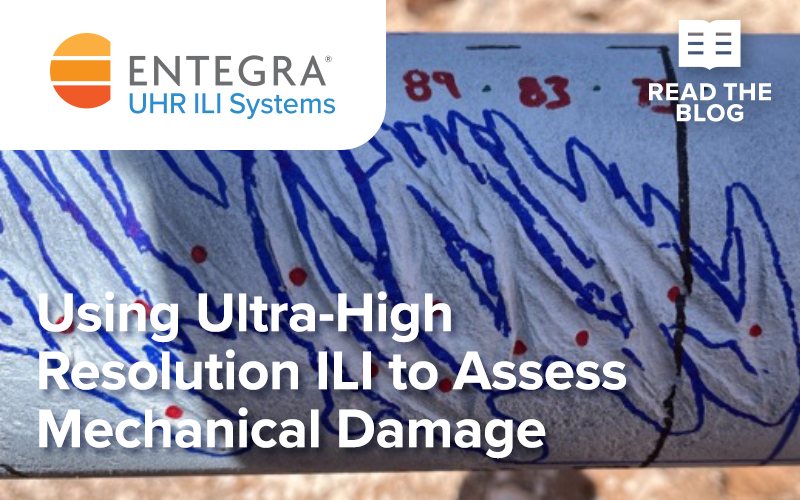
Using Ultra-High Resolution ILI to Assess Mechanical Damage
Differentiating mechanical damage from corrosion is incredibly important.
As operators know, differentiating a gouge from corrosion in a pipeline presents a unique challenge. Mechanical damage (i.e. 3rd party damage) is a serious concern that has been determined to be a top three cause of pipeline leaks. In this case study, we’ll share an example of how ENTEGRA’S Ultra-High Resolution (UHR) ILI system was able to deliver a more complete, accurate and nuanced assessment of both mechanical damage and corrosion for an operator.
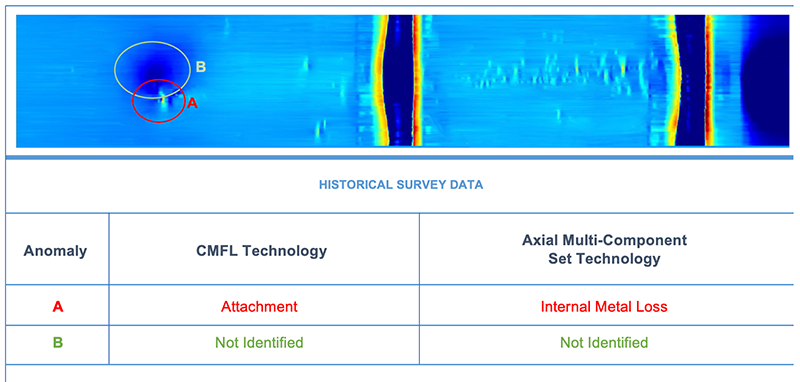
True UHR technology, combined with human experience-based data analysis, allowed this operator to go beyond POD and POI to ROI — return on investment.
The Proof is Performance
It all comes down to building enough context around each anomaly to correctly detect it, identify it and assess its relative threat. Gouge? Corrosion? Or both?
In the case of this 8” ERW gas pipeline, available historical data presented as unreliable. In data analysis, ENTEGRA correlated this historical data with new survey data. Previous reports lacked the clarity to see smaller features or detect the nuances of the information that was present. Further, one previous dataset reported an anomaly as internal metal loss while showing an indication of the close metal object, but not actually calling it.
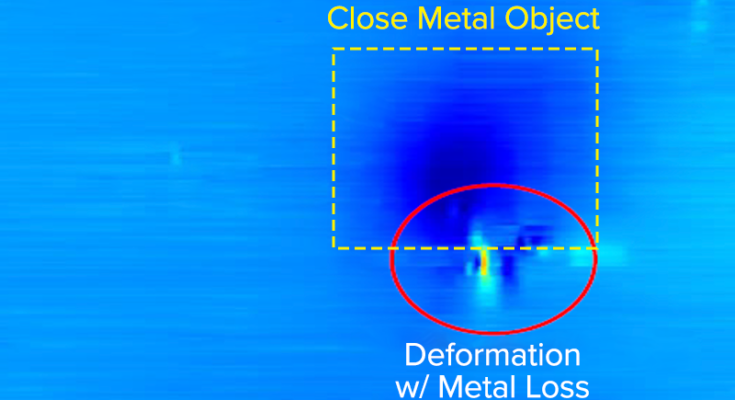
As you can see here, only the ultra-high resolution, axial MFL showed a clear indication of a close metal object in the vicinity of the metal loss feature. It is represented by the darker blue region above the deformation. Experience tells us that its shape and the circular uniformity of the dark blue color signature implies that another pipe was laid perpendicular to the operator’s pipe. What you are also seeing is truly nuanced data revealing subtle gouging signatures not indicated in the historical data.
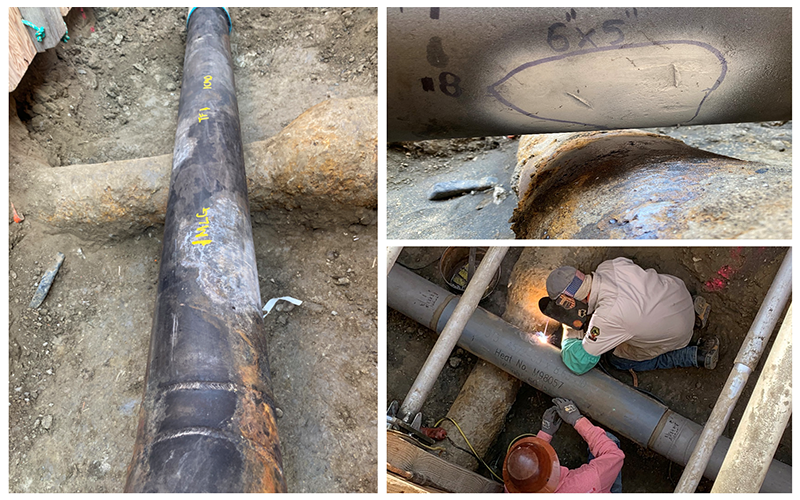
The UHR ILI system correctly predicted the actual anomaly to be a dent with a gouge, a condition which immediately raised this anomaly’s threat level. The Entegra UHR ILI system recognized the signature traits of gouging and associated it with the existence of the close metal object, which are often associated with one another. The outcome: a confirmation dig and repair of a potentially harmful feature that would have otherwise been missed.
Conclusion
A combination of state-of-the-art UHR technology and DA experience can help with the POD, POI and sizing of mechanical damage. Ultra-High-Resolution ILI brings a whole new dimension to the assessment and mitigation of this historically problematic integrity threat, especially when mechanical damage occurs concurrently with corrosion.
Making the distinction between gouging and corrosion is job one. A UHR ILI system can help minimize risk, mitigate integrity threats and help operators prioritize — and get ahead of — their remediation programs. From the technology itself to the human-experience based data analysis and reporting behind it, UHR ILI is achieving results previously thought next to impossible.

